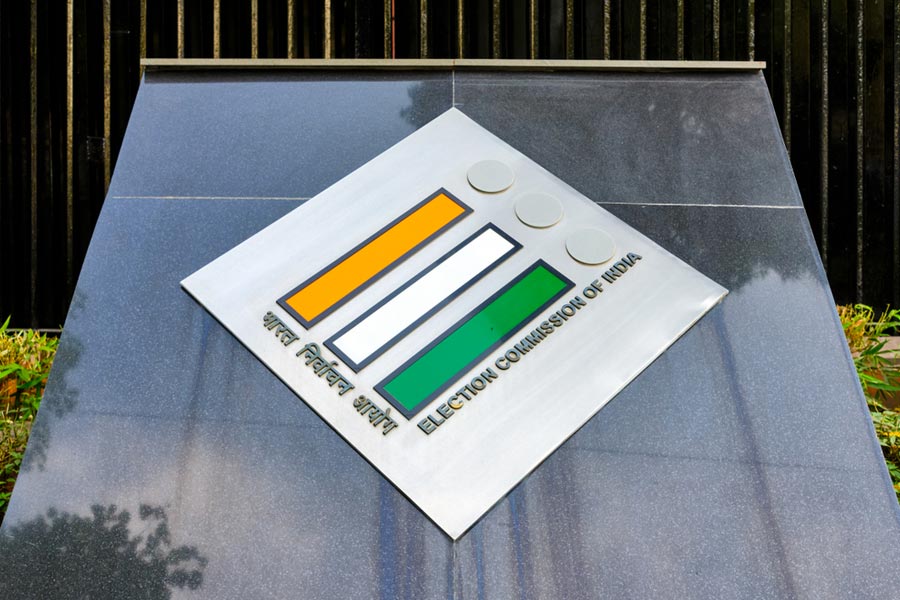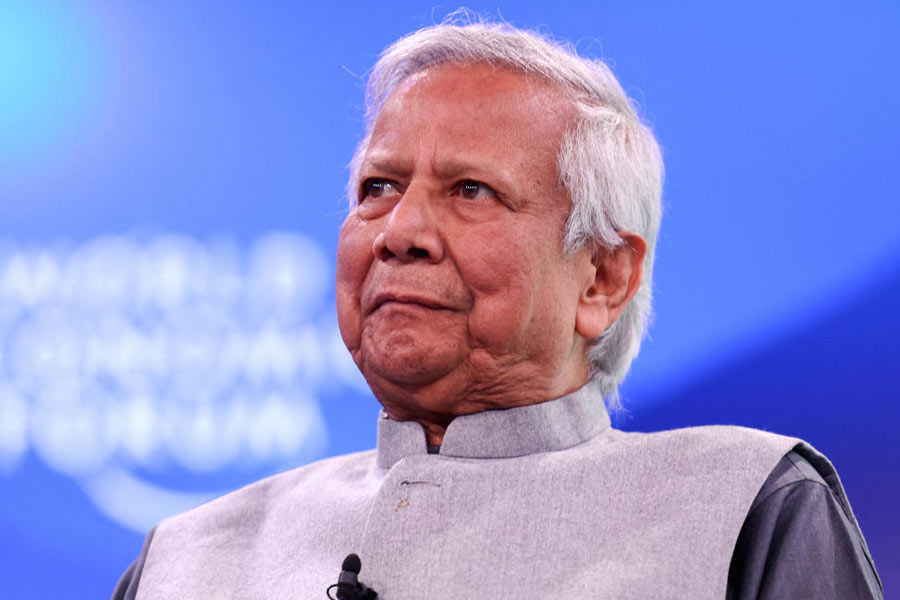
Ambi Parameswaran, the former CEO of FCB Ulka Advertising, has over 40 years of experience in marketing, sales and advertising. The veteran adman and brand strategist, who currently writes, teaches and coaches corporate leaders, is out with his ninth book, Sponge — Leadership Lessons I Learnt From My Clients. Excerpts from a chat with Ambi, moderated by Rita Bhimani at Red Sofa Conversations, presented by The Conclave in association with The Telegraph, on August 18.
Rita Bhimani: The ‘sponge’ in your book refers to what you’ve absorbed and learnt from your clients. But doesn’t it also have a negative connotation, like how you sponge money off someone?
Ambi Parameswaran: The idea actually came from there. I’ve a nephew who’s a doctor in Australia. He used to come regularly to India on holidays and used to refer to one of his friends as a ‘sponge’ because he used to ‘sponge’ marks off his teacher. The idea of a sponge came from there. Yes, sponge has a negative connotation but why not give it a positive spin?
Rita: You’ve tried to show both the positive and the negative side of the relationships that you’ve had with your clients over 35 years. In one chapter of your book, you’ve talked about sackings. Which particular client did this sacking?
Ambi: There are two chapters in the book about sacking. Getting sacked is a really traumatic experience in advertising. Fortunately, in our agency we had the reputation of hanging on to our clients for the long term. Once you get a client, you don’t lose the client, that was the philosophy. But you do get sacked. Early in my career, I was told by a client that they wanted a poster to be delivered by the next day. I told him I needed at least four days. He said, ‘No, I want it by tomorrow or else I’ll sack your agency’. I was a little livid. I told him, ‘Look, you can’t sack the agency — you’re a two-bit product manager. I can’t sack you, I’m a two-bit account executive. Your father can’t sack me because he’s only a marketing manager. Only your grandfather can sack me because he’s the CEO. So shut up.’ He was shocked. After a few minutes he said, ‘Yaar, why are you getting angry?’ A client who threatens to sack you, won’t sack you. Just like a barking dog doesn’t bite. A dog that bites you will come and bite you. A barking dog is actually scared of you. A client who wants to sack you will just call you and sack you.
Rita: Sometimes you learn lessons from people lower down the rung. Would you tell us about the chapter where you talk about Zee and the chaiwala?
Ambi: Pradeep Guha had just joined Zee. I used to have this habit of going and meeting key clients at least once a month. I went to Pradeep and was talking about business and other things. He said, ‘Yaar Ambi, yeh art theek nahi hai. Look at our hoardings. I’ll give you names of good freelance art directors. Use them.’ I asked him if he knew about the alternatives that were presented to his team. I had the habit of carrying A4 size printouts and I showed him the three options that were originally presented. I also told him that they had approved the fifth option. He called the senior marketing person who had approved it and asked why the first options were rejected. She said, ‘Our audience is very massy. They won’t appreciate this kind of art.’ So Pradeep called the office chaiwala and asked which one of the four designs he liked. Deepak, the chaiwala, chose the first design. Pradeep then told his colleague, ‘A lot of times you’ve biases about what people like and don’t like. You think a chaiwala will pick something that is crass and crude but the chaiwala also has taste — it’s just that he can’t afford it.’
Rita: You’ve always had a gut feeling about certain products that the clients have not gone ahead with, like All Out. Can you tell us that story?
Ambi: The All Out story is fascinating. We got the account of Lever Johnson (Hindustan Lever and SC Johnson & Son Inc, US). They were launching products like mosquito repellents and air fresheners. In one of the early meetings, Mark, a global expert on insect control, came to our office. We showed him ads of some new products launching in India. He asked who has launched the liquid mosquito repellent. We said it’s a small company called All Out. He was going to Pune the next day to meet the client and I suggested he ask them why they’re not launching a similar product. The client was launching mosquito repellent sprays, mats and coils. The next day, Mark spent an hour explaining to the client why we should abandon launching such old products and go with new products like liquid vaporisers. The client wouldn’t agree, they kept saying that mats and coils are a big market. They said that a small company in Delhi is launching liquid vapourisers, it’s a small market, that it’s a difficult product to launch and it’ll take time to establish it. Mark said, ‘We have the technology in Chicago, we can get it here, make it and launch it. Why are you trying to sell old products?’ The client didn’t budge and Mark went back to Chicago. Lever Johnson kept launching these kind of me-too products and all of them kept flopping. Seven years later, the company wrote off Rs 350 crore and packed its bags. The story doesn’t end there.
Five years later, I get a call from K.K. Sridhar who used to work for S.C. Johnson. He informed me that they’re buying out All Out. Basically, 15 years later they paid Rs 156 crore and bought All Out. They could’ve had an All Out of their own! I called Mark and told him that maybe we should’ve argued some more, maybe we gave up too soon. We, as an agency, thought this multinational company knows everything. I regret that now.

Rita: We are all so charmed by the brand Nirma and what they have built. Tell us the story you have about Karsanbhai Patel.
Ambi: It was around 1996. Nirma was ruling the roost as a large detergent brand. They also had a beauty soap with the tag line ‘Saundarya sabun Nirma’ and it was quite big. We were called because Nirma wanted to launch a toothpaste. So we went to the villages of Maharashtra and Gujarat to research and sampled the product out. It was a little pungent but it was a very good product.
In an urban setting you may say, ‘Who will use a Nirma toothpaste?’ But in rural settings it means an acceptable product of an acceptable value. We went back to Karsanbhai and said that we have tried it out and people like the product. But Karsanbhai took a call and said ‘No, we won’t launch it. My consumer will buy my product if the value is less than half the price of the market leader. My Nirma saundarya sabun is half the price of Lux. And Nirma detergent is less than one-third of Surf.’
Based on the costing that we had done, he said he won’t be able to sell that toothpaste for half the price of Colgate. He somehow instinctively knew who his consumer was and the value they will pay for the Nirma brand. We didn’t launch it. Seven years later, Anchor toothpaste cracked the formula. They launched a larger size toothpaste at half the price of Colgate.
Rita: You haven’t talked about commodification of women in advertising (in your book). How have you dealt with it? Are you guilty of using or misusing women to sell a product?
Ambi: Fortunately, I’ve never had the opportunity of working on fairness creams. But for many years, I worked on the advertisement of a soap called Santoor that promoted younger-looking skin. A young kid comes running to the woman and says, ‘Mummy’ and everyone is surprised. We tried changing it but the promise of younger-looking skin and a mother being mistaken for someone younger is so strong in Indian ethos that the campaign continued for 30 years. Santoor became the second largest soap brand overtaking an iconic brand like Lux last year.
We in fact did an ad for Tata Indica that had the line, ‘Gentlemen prefer curves’. Indica was a beautiful-looking car, so we had used that line. But we got a letter from our consumers and we stopped after that. It ran once.
Rita: You say that you travel economy class and don’t stay back at night to cut company costs. Then why do agencies get greedy when it comes to going to beautiful locales to shoot or hiring Bollywood stars for their ad films?
Ambi: This Bollywood obsession is entirely client-driven. Given a choice, an agency would not like to use a Bollywood star in a film. This one client was shooting with Amitabh Bachchan for their brand and he flew down 25 of his family members to the shoot. They had erected a place on the set where they could sit and watch Mr Bachchan. Mr Bachchan landed on the set and asked, ‘What is this gallery with 25 people?’ So they were packed out. Ad films are a bit of a racket. Today you can’t make a good quality soap ad for less than a crore. Everyone including a camera man or a light man charges more for ad films than feature films.
Rita: What about the exotic locations when you’re trying to have a good time at the expense of the clients?
Ambi: There’s an old joke where a copywriter is presenting the script. He says, ‘This film opens in a beautiful sea shore in south of France’ and the client says, ‘No, it doesn’t.’ I once read an anecdote in an advertising book — I personally don’t believe that incident happened. Apparently, they wanted to shoot an ad film where a lama walks up the mountain and reaches the snow-capped peak. They budgeted around 500 thousand dollars and went to the Andes, in either Peru or Chile. They wanted to use a goat who would go up the mountains with the lama. But the local people there said that this goat doesn’t go up and is scared of heights! So they shot the snow-capped mountains separately, the goat separately and then came and matched the two things in post-production!

Text: Ushnota Paul
Pictures: Shuvo Roychaudhury











